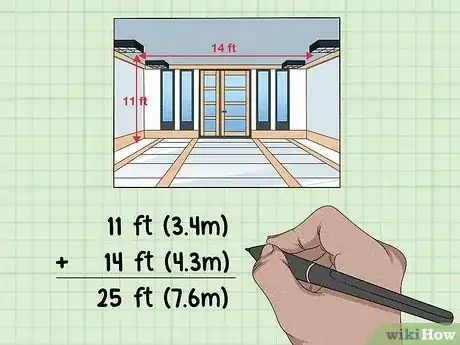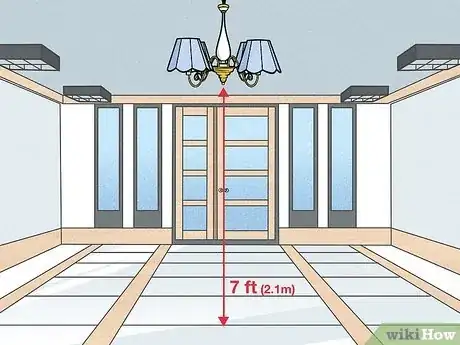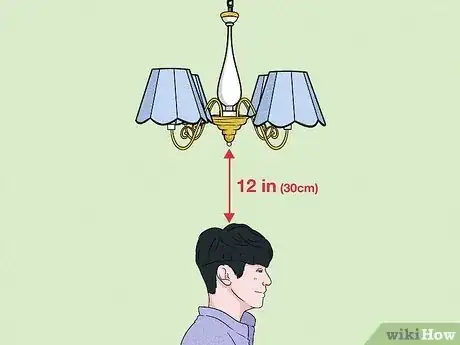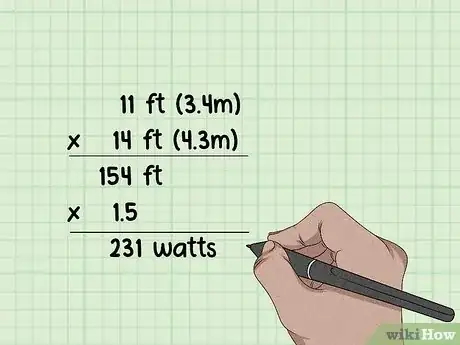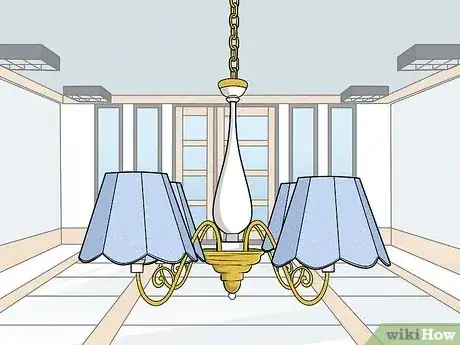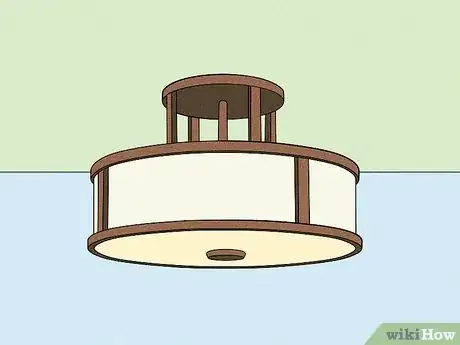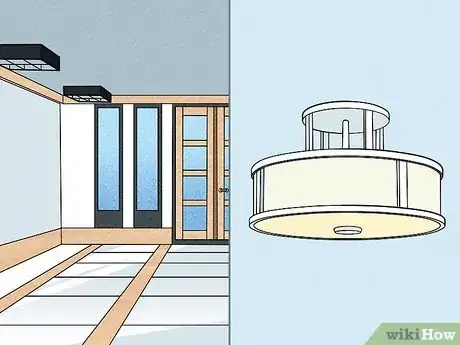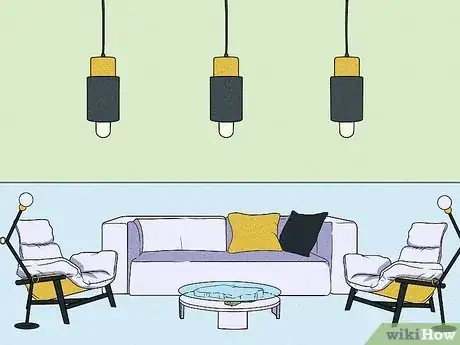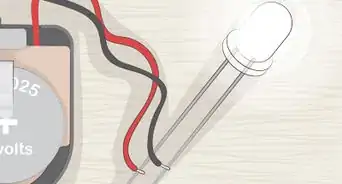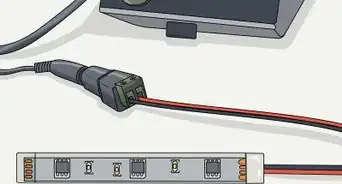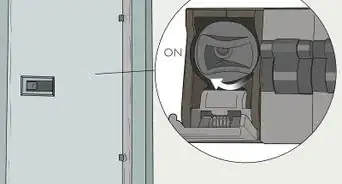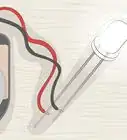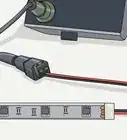This article was co-authored by Juli Roland and by wikiHow staff writer, Hannah Madden. Juli Roland is a Color Specialist and the Founder of PaintColorHelp.com, one of the first companies in Dallas, Texas metro area that provides in-home color consultations and helps clients create paint color schemes. Juli has over 15 years of commercial and residential color consulting experience, including seven years as a custom-matcher in the paint industry. She earned her certification in color strategy from Camp Chroma and is a member of the Inter-Society Color Council. She has a BA in Advertising from Texas Tech University.
This article has been viewed 1,960 times.
Your foyer is the first thing that guests experience when they walk into your home. The right lighting will make your decorations and your design choices shine! In this article, we’ll tell you exactly what size and shape you should choose for your light fixture, as well as helpful tips on picking out wattage and an overall style.
Steps
How high should you hang a foyer light?
-
1Hang the light 7 ft (2.1 m) above the floor. This will give your guests ample room to walk underneath it, and it will take up space, too.[2] This rule of thumb is also a good one to follow if you have vaulted ceilings.
- If your foyer is 2 stories high, situate the bottom of the light in line with the second story.
-
2Give at least 12 in (30 cm) of head height. If your ceilings aren’t tall enough to accommodate 7 ft (2.1 m) of head height, that’s totally fine. Just make sure that the bottom of your fixture is at least 12 in (30 cm) away from anyone’s head as they walk through your foyer.[3]
Expert Q&A
-
QuestionHow bright should a foyer light be?
 Juli RolandJuli Roland is a Color Specialist and the Founder of PaintColorHelp.com, one of the first companies in Dallas, Texas metro area that provides in-home color consultations and helps clients create paint color schemes. Juli has over 15 years of commercial and residential color consulting experience, including seven years as a custom-matcher in the paint industry. She earned her certification in color strategy from Camp Chroma and is a member of the Inter-Society Color Council. She has a BA in Advertising from Texas Tech University.
Juli RolandJuli Roland is a Color Specialist and the Founder of PaintColorHelp.com, one of the first companies in Dallas, Texas metro area that provides in-home color consultations and helps clients create paint color schemes. Juli has over 15 years of commercial and residential color consulting experience, including seven years as a custom-matcher in the paint industry. She earned her certification in color strategy from Camp Chroma and is a member of the Inter-Society Color Council. She has a BA in Advertising from Texas Tech University.
Certified Color Specialist Avoid fluorescent bulbs and LEDs that are too cold—you can see the "color temperature" listed on the package as the Kelvin rating. A higher temperature of 6,000 means a colder, bluer light, while a 2,700K bulb produces a more amber light. Look for something between that range if you don't want your bulbs to have a yellow tint.
Avoid fluorescent bulbs and LEDs that are too cold—you can see the "color temperature" listed on the package as the Kelvin rating. A higher temperature of 6,000 means a colder, bluer light, while a 2,700K bulb produces a more amber light. Look for something between that range if you don't want your bulbs to have a yellow tint.
References
- ↑ https://www.bobvila.com/articles/21907-pendant-lighting-101/
- ↑ https://www.cvhomemag.com/lighting-101-specs-to-help-illuminate-your-space/
- ↑ https://www.architecturaldigest.com/story/kelly-wearstler-how-to-choose-the-right-chandelier
- ↑ https://www.ballarddesigns.com/howtodecorate/2011/07/how-to-light-a-room/
- ↑ https://www.bobvila.com/articles/21907-pendant-lighting-101/
- ↑ https://www.cvhomemag.com/lighting-101-specs-to-help-illuminate-your-space/
- ↑ https://www.cvhomemag.com/lighting-101-specs-to-help-illuminate-your-space/
- ↑ https://www.cvhomemag.com/lighting-101-specs-to-help-illuminate-your-space/
- ↑ https://www.bobvila.com/articles/21907-pendant-lighting-101/
